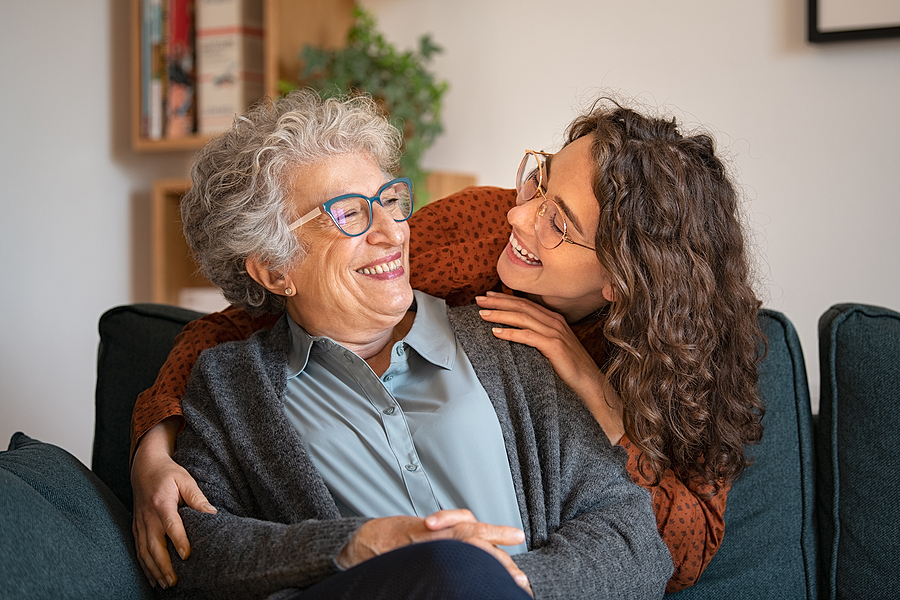Understanding Bruising in Seniors: What’s Normal and When to Worry

Bruising in seniors is common and usually goes away without any treatment. There are, however, times when bruising is a sign of a more serious problem and should be evaluated.
The key is knowing when bruising in seniors is something to worry about — and when it isn’t. It’s also important to know what steps can be taken to limit bruising, including preventing falls.
What Causes Bruising in Seniors?
You bump your shin against something and a bruise appears the next day.
That bruise is the result of small blood vessels near the surface of your skin that have broken. Blood leaks out of the vessels and makes the skin above it appear darker.
Bruising, of course, happens to younger people as well, but it generally requires more of an impact to cause a bruise. That’s because, as we age, skin naturally becomes thinner, providing less of a cushion to protect blood vessels. At the same time, blood vessels are more prone to rupturing as we get older.
Certain medications, especially blood thinners, contribute to increased bruising in seniors by decreasing the blood’s ability to clot. Meanwhile, both topical and systemic corticosteroids that are used to treat everything from allergies to eczema, can result in even thinner skin, which makes bruising more common.
Unexplained Bruising on the Hands and Forearms
We all know that bumps and falls can cause bruising, but what about those large purplish red bruises that commonly appear on the backs of hands and forearms as we get older?
Called actinic purpura, these bruises are caused by normal aging in combination with sun damage — and they can occur with only minor trauma or even no injury at all. While not harmful or the sign of any serious condition, these bruises can last up to three weeks and can cause skin discoloration even after they’ve gone away. Wearing sunscreen can help prevent further damage to delicate skin. There is also evidence that taking citrus bioflavonoids daily can help prevent these lesions from forming. Treatments such as topical retinoids help build collagen and protect skin — and may be worth discussing with your doctor if you’re bothered by the appearance of these bruises.
When Bruising in Seniors Requires Attention
You wake up and notice a bruise on your leg, but you can’t recall bumping into anything or hurting your leg in any way.
It could be that you bumped into something and didn’t even take notice of it. But if you bruise frequently for no apparent reason, it’s a sign that you should talk to your doctor as it could be caused by a more serious underlying condition, such as a blood-clotting problem. If any of the following apply to you, it’s smart to be proactive and consult with your doctor.
- Frequent, unexplained bruising.
- A history of easy bruising and prolonged bleeding.
- A family history of forming bruises easily or bleeding excessively.
- Recently started taking a new medication and notice that you are bruising more easily.
- Bruises that grow after the first day they appear or do not go away after two weeks.
- Bruises that appear around your eye and limit your vision.
- Bruises that occurred from hitting your head.
- Suspicion that a bone may have been broken.
- Bruises that keep coming back in the same place.
- Swelling around the bruised skin or pain that lasts longer than two or three days.
- Numbness, weakness, or loss of function on a bruised limb, joint, or muscle.
- A lump forming underneath or over the bruised skin.
Preventing and Treating Bruising in Seniors
While it’s not possible — at any age — to prevent bruising altogether, you can take steps to reduce both the frequency and severity of bruises.
Bruising in seniors can be a sign of a vitamin, mineral, enzyme, or flavonoid deficiency. Here’s an extensive look at the nutrients that could improve bruising — and how you can get more of them from both food and supplements.
Treating a bruise is best done through the time-tested R.IC.E. method.
- Rest your bruised arm, leg, hand, or foot. Whatever part of your body you may have injured, taking time to rest and relax is a good idea.
- Ice your bruise immediately after the injury occurred for up to 20 minutes. Repeat several times a day for a day or two following injury. Applying ice or a cold compress helps to reduce blood flow and prevent the inflammation that causes bruising.
- Compress — apply a light compression bandage around the bruise, this reduces the bleeding, inflammation, and pain.
- Elevate your bruise, if possible, above the heart level. This helps to drain fluid away from the bruise and also helps with pain, inflammation, and swelling.
Another important step to take is to remove any tripping hazards from your living space, such as loose cords or clutter. Here are seven strategies to prevent falls and the bruises that often come with them. While some bruising in seniors is certainly inevitable as we age, taking the time to consider the conditions surrounding your bruises — as well as how you can prevent excessive bruising — is always a smart move that can prevent further problems.
Springpoint has been helping older adults plan for a future filled with confidence since 1916, offering Life Plan Communities, senior care communities, a family of affordable housing residences, and age-in-place home care options. Contact us to find out more.



